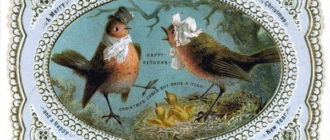
Painting “Ophelia” by John Millet – an amazing story and secret signs of a cult work
Ophelia is the most famous painting by John Everett Millais in 1852. The canvas depicts the heroine of Shakespeare’s tragedy, distraught with grief, after falling into a stream and a moment before her death. As if submitting to fate, she gently glides through the water, surrounded by amazing nature, almost merges with algae, water lilies and reeds growing around. She’s still alive.
Her eyes are open, and her face does not express anxiety. An ancient dress embroidered with silver keeps her afloat for a while, but gradually gets wet and pulls the heroine down. Plunging deeper into the water, she still squeezes the flowers in her outstretched hands. It seems that the last touching love song is pouring from the open mouth … And only a large fallen willow tree with protruding roots becomes a silent witness of its undisturbed death.
Author: John Everett Millais (1829-1896).
Year of writing: 1852
Dimensions: 76.2 x 111.8 cm.
Style: Pre-Raphaelites.
Genre: Landscape. Portrait. Literary scene.
Technique: Oil painting.
Material: Canvas.
Location: Tate Gallery, London
John Millet – 19th century English painter
He is one of the inspirers of the Pre-Raphaelite Brotherhood, founded in 1848. Adhering to the canons that existed before Raffaello Santi, and resolutely rejecting the traditions of academism, the master abandoned idealization, created the most truthful works and paid incredible attention to detail.
The painting “Ophelia” Millet began to paint with a landscape, which, according to the artist, was no less important than the image of the character. A suitable location was found near the Hogsmill River, in Surrey in the east of England. The coastline and vegetation most closely matched the scene described in William Shakespeare’s play. In July 1851, the master began his laborious and painful work.
To study and accurately convey the plants surrounding Ophelia, Millet spent 11 hours in the open air every day for five months. Hoping to catch the perfect bloom of each species, he endured raging insects, rains and the scorching sun. Summer was ending, the days were getting shorter. Some flowers wither and others blossomed. By November, the weather had worsened. Strong cold winds blew away the easel.
The artist was afraid to repeat the fate of Ophelia, being carried away into the river.
It was no easier for Elizabeth Siddal, a 19-year-old model, who posed for John Millet in the studio to paint the image of the drowning heroine. Dressed in an antique dress bought by the artist in an antique shop, she sank into a bathtub filled with water, which was warmed by candles placed from below. One day the candles went out and the water gradually cooled down. The master, carried away by his work, did not even notice this. And the girl, who was well acquainted with the creative process, did not dare to interrupt the painter’s inspiration and fell seriously ill.
At the request of her father, Millet was forced to pay medical bills. In 1852, Ophelia was completed and immediately exhibited at the Royal Academy of Arts. But she met an ambiguous assessment of her contemporaries. Some felt that the feeling of death was conveyed too literally. Others saw the erotic context and called the painting vicious. But everyone recognized the realistic depiction of nature, noted the symbolic details, the language of which was understandable and popular in Victorian England.
To create a natural look, the artist used exceptional botanical precision and gentle color transitions. Rejecting the dark base, he painted Ophelia on a dazzling white background that breaks through the reeds growing in the water and creates the effect of specularity. Many varieties of flowers can be read as an omen of the heroine’s sad fate.
Some of them are mentioned by Shakespeare, others were added by Millet himself to convey code messages:
- the roses that float in the water and the white field bush growing on the shore remind of the “May rose” in the play, but have a funerary hue associated with the ceremonies of the cult of the dead;
- willow, nettle and chamomile are associated with forgotten love, pain and innocence;
- pansies mean unrequited love;
- a garland of violets around Ophelia’s neck symbolizes fidelity and chastity;
- poppies predict death.
Painting “Ophelia” by John Millet became the greatest masterpiece of the Pre-Raphaelite style and the quintessence of painting of the Victorian era. Combining his interest in Shakespeare’s story with a careful display of the details of nature, the painter created a memorable and unusual image for that time, demonstrated high technical skill and an extraordinary artistic vision.






